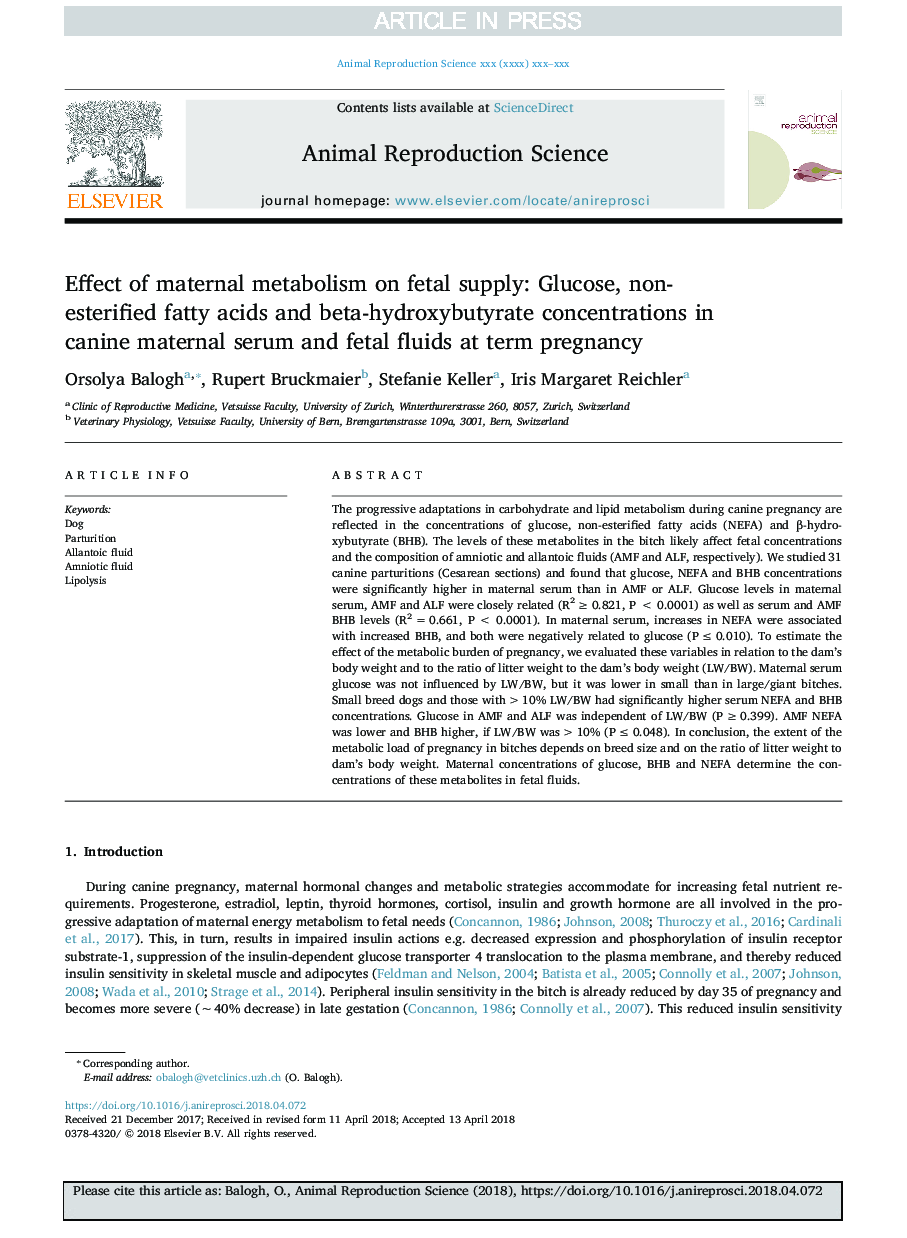| Article ID | Journal | Published Year | Pages | File Type |
|---|---|---|---|---|
| 8403911 | Animal Reproduction Science | 2018 | 8 Pages |
Abstract
The progressive adaptations in carbohydrate and lipid metabolism during canine pregnancy are reflected in the concentrations of glucose, non-esterified fatty acids (NEFA) and β-hydroxybutyrate (BHB). The levels of these metabolites in the bitch likely affect fetal concentrations and the composition of amniotic and allantoic fluids (AMF and ALF, respectively). We studied 31 canine parturitions (Cesarean sections) and found that glucose, NEFA and BHB concentrations were significantly higher in maternal serum than in AMF or ALF. Glucose levels in maternal serum, AMF and ALF were closely related (R2â¯â¥â¯0.821, Pâ¯<â¯0.0001) as well as serum and AMF BHB levels (R2â¯=â¯0.661, Pâ¯<â¯0.0001). In maternal serum, increases in NEFA were associated with increased BHB, and both were negatively related to glucose (Pâ¯â¤â¯0.010). To estimate the effect of the metabolic burden of pregnancy, we evaluated these variables in relation to the dam's body weight and to the ratio of litter weight to the dam's body weight (LW/BW). Maternal serum glucose was not influenced by LW/BW, but it was lower in small than in large/giant bitches. Small breed dogs and those with >10% LW/BW had significantly higher serum NEFA and BHB concentrations. Glucose in AMF and ALF was independent of LW/BW (Pâ¯â¥â¯0.399). AMF NEFA was lower and BHB higher, if LW/BW was >10% (Pâ¯â¤â¯0.048). In conclusion, the extent of the metabolic load of pregnancy in bitches depends on breed size and on the ratio of litter weight to dam's body weight. Maternal concentrations of glucose, BHB and NEFA determine the concentrations of these metabolites in fetal fluids.
Related Topics
Life Sciences
Agricultural and Biological Sciences
Animal Science and Zoology
Authors
Orsolya Balogh, Rupert Bruckmaier, Stefanie Keller, Iris Margaret Reichler,
